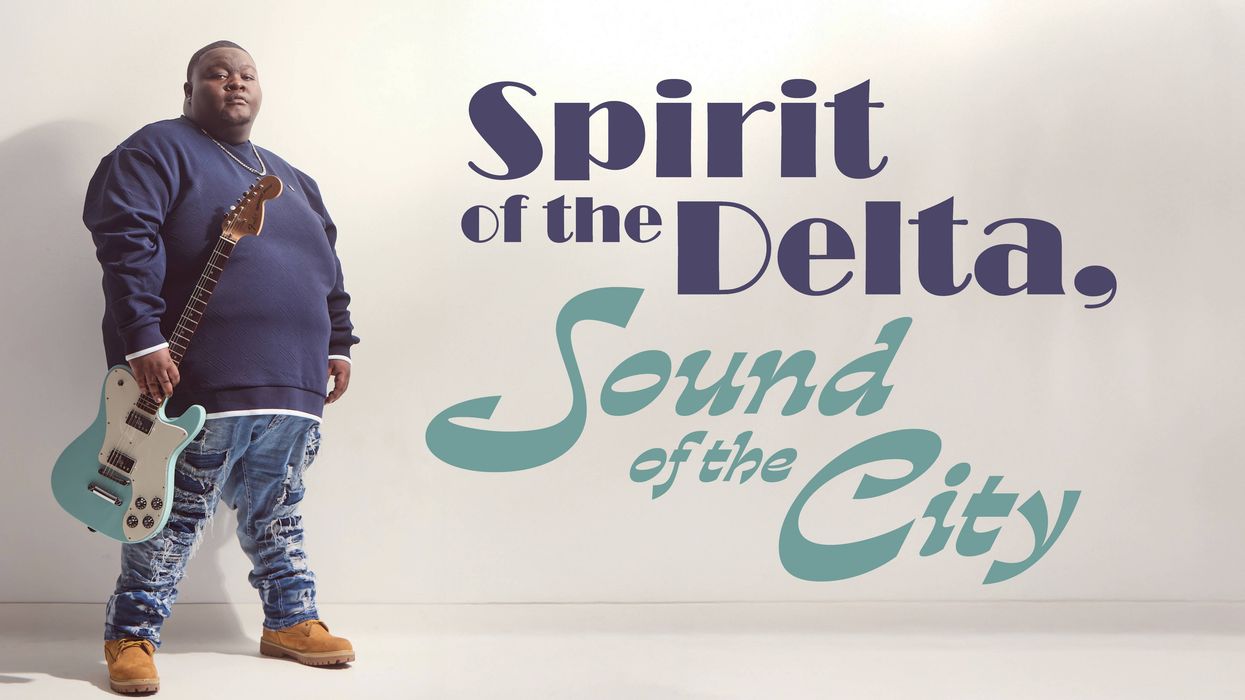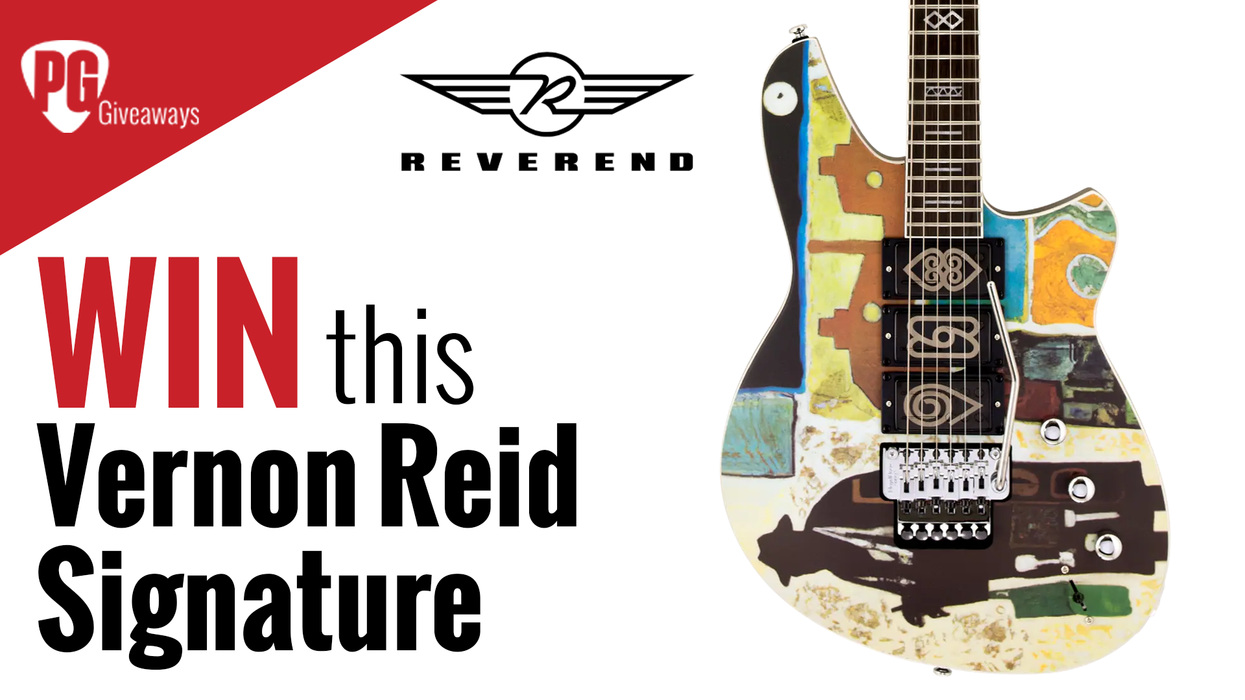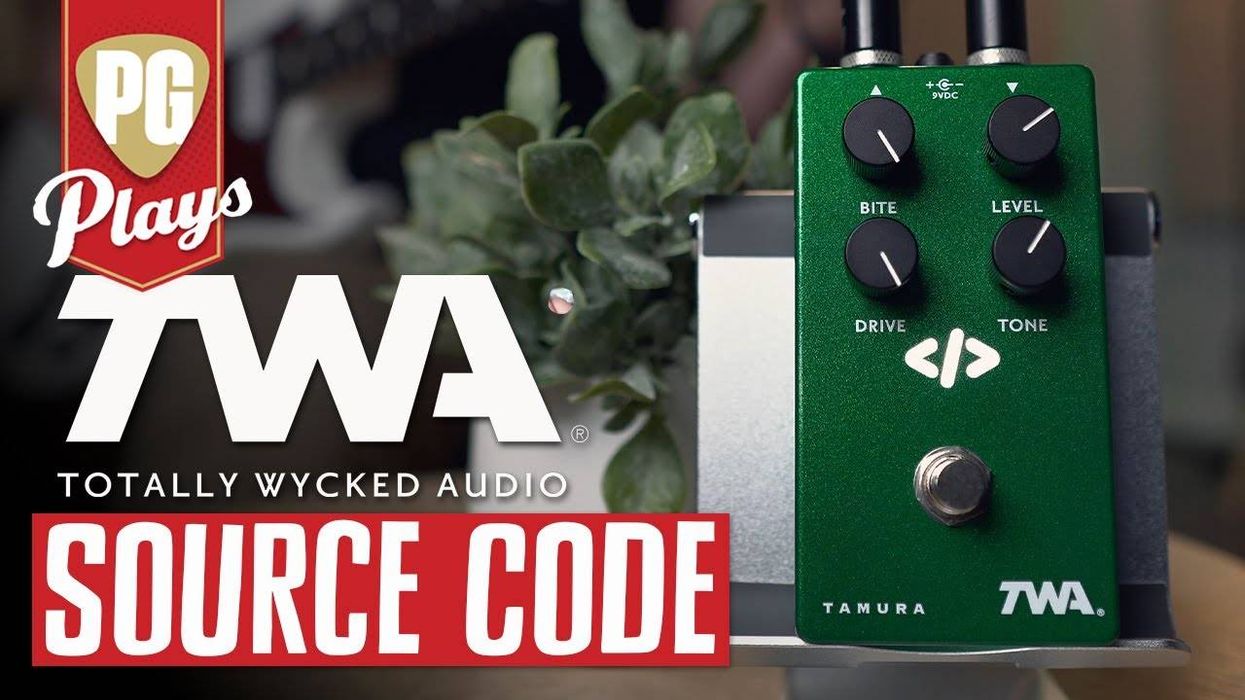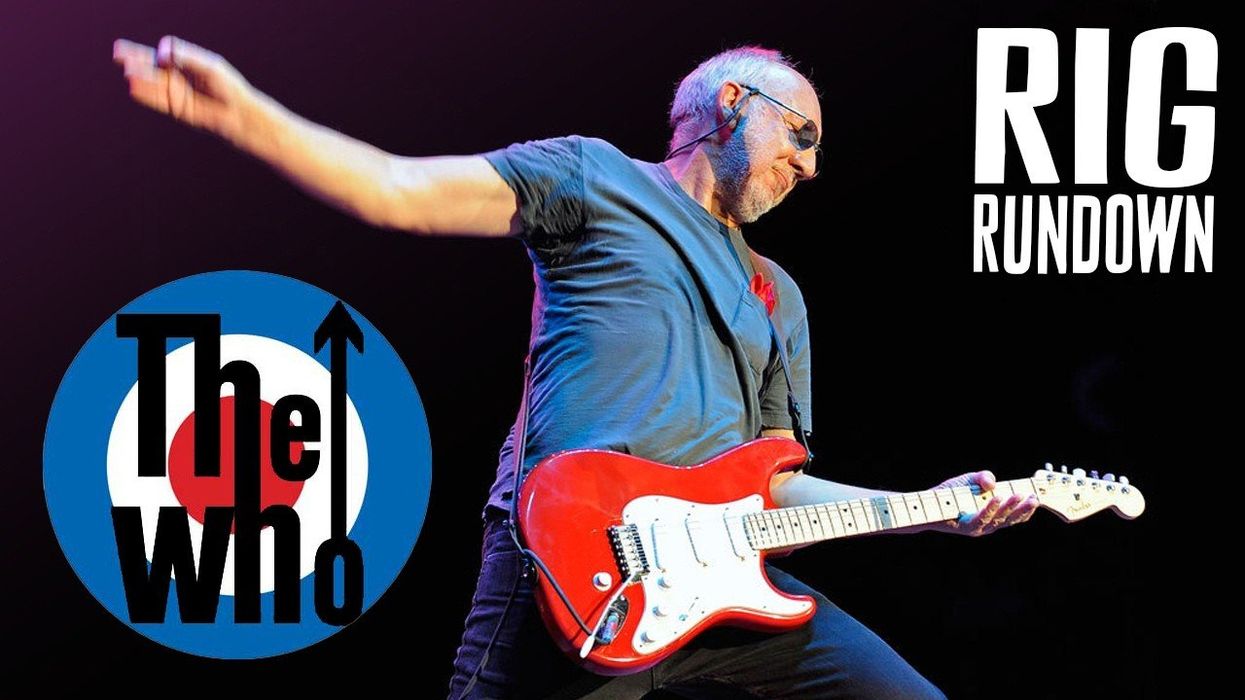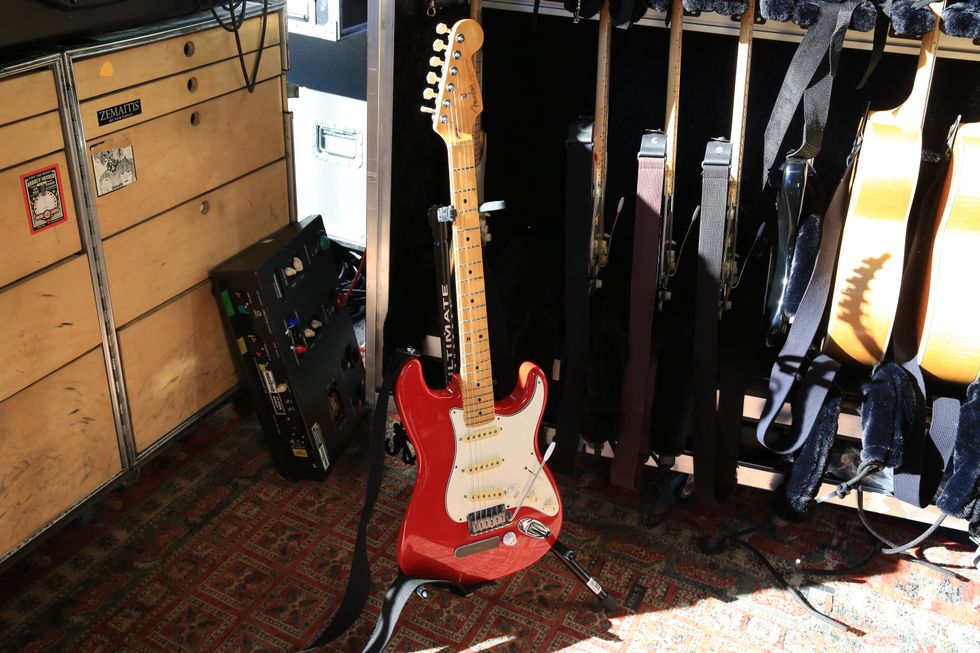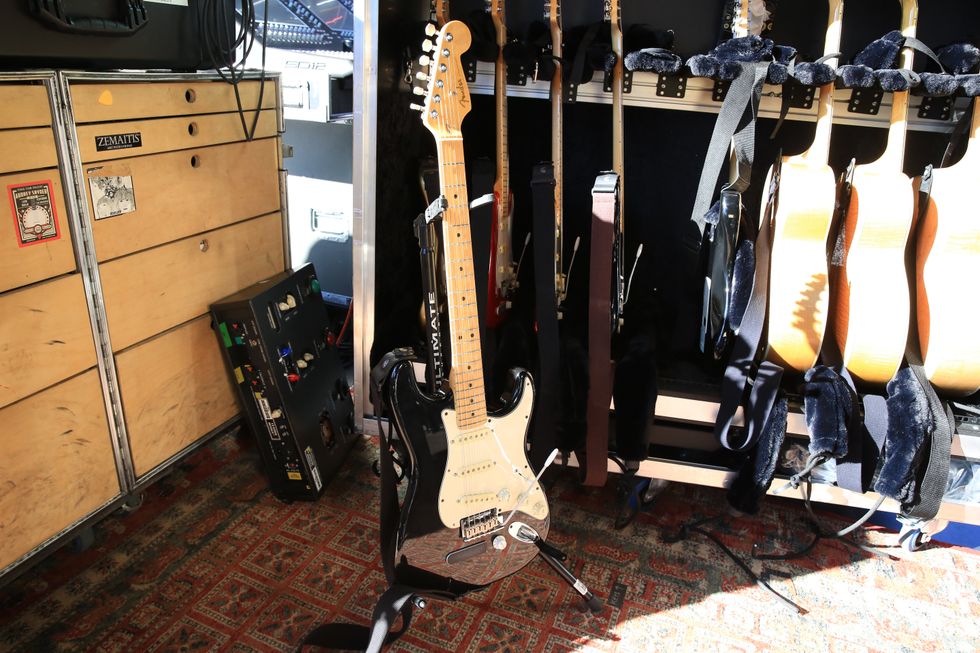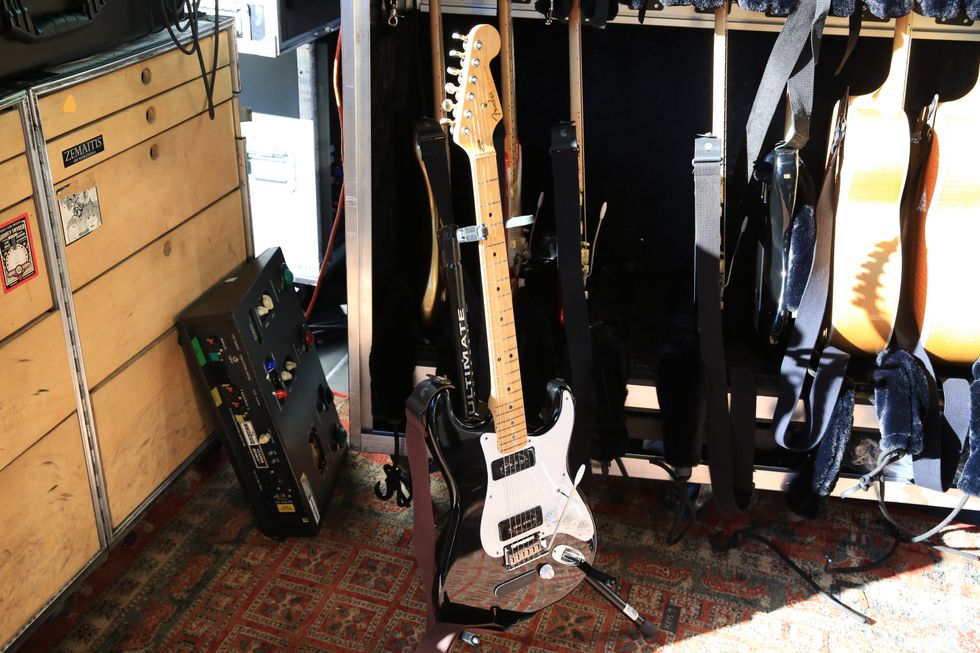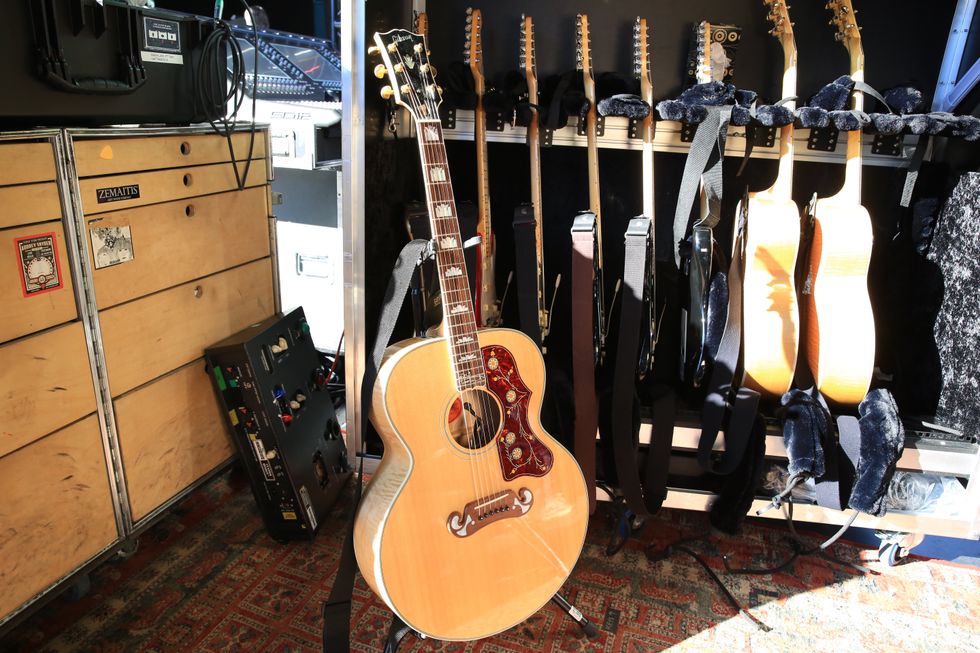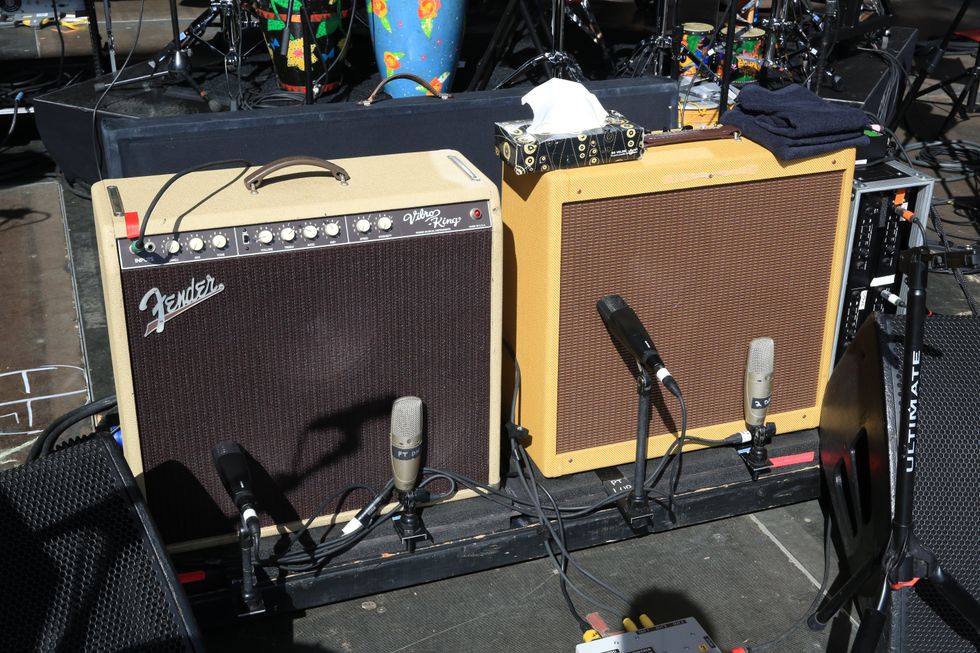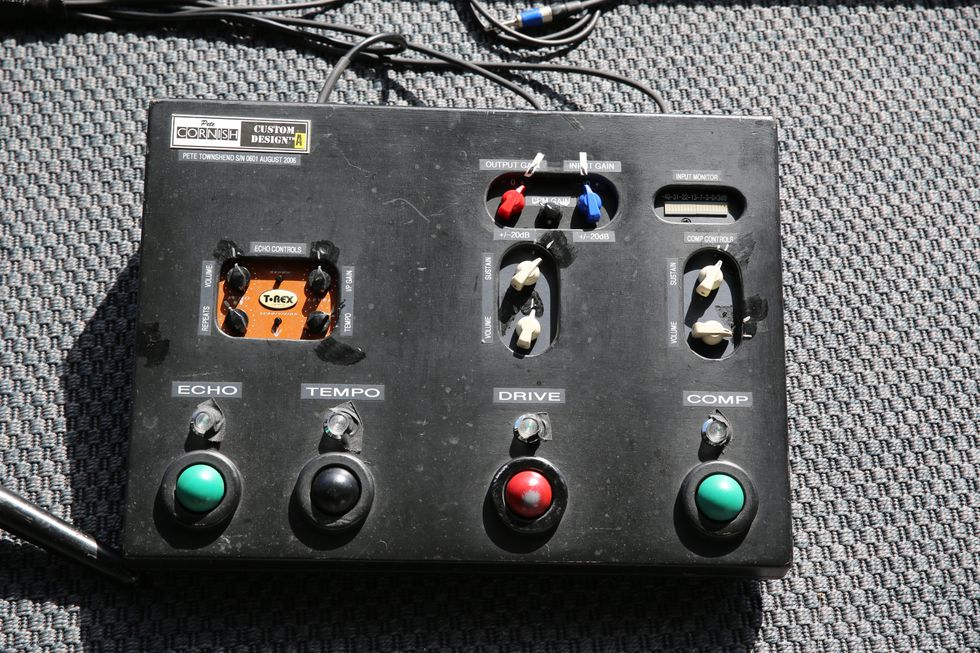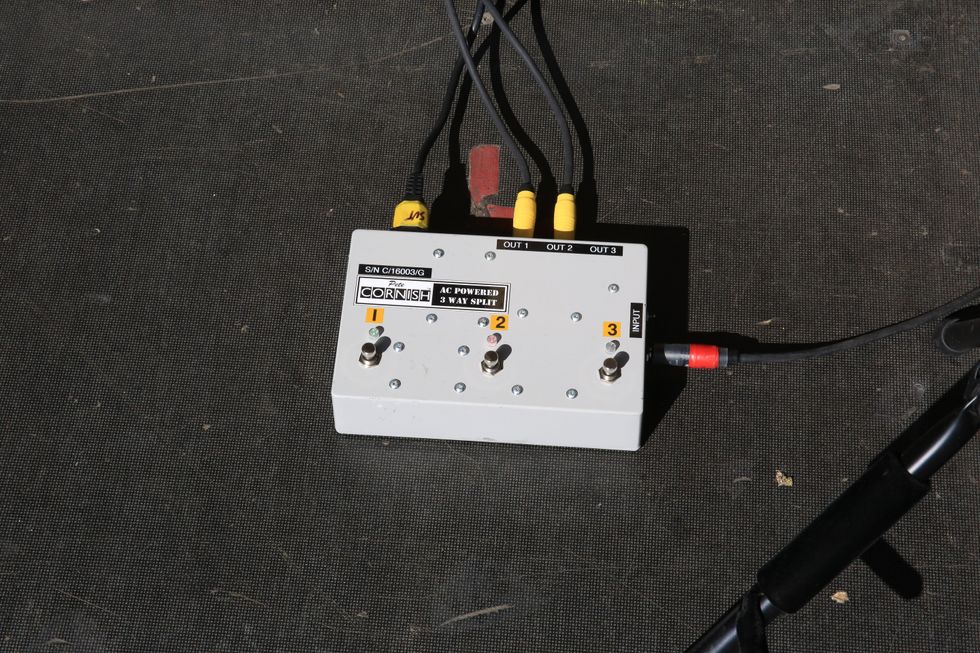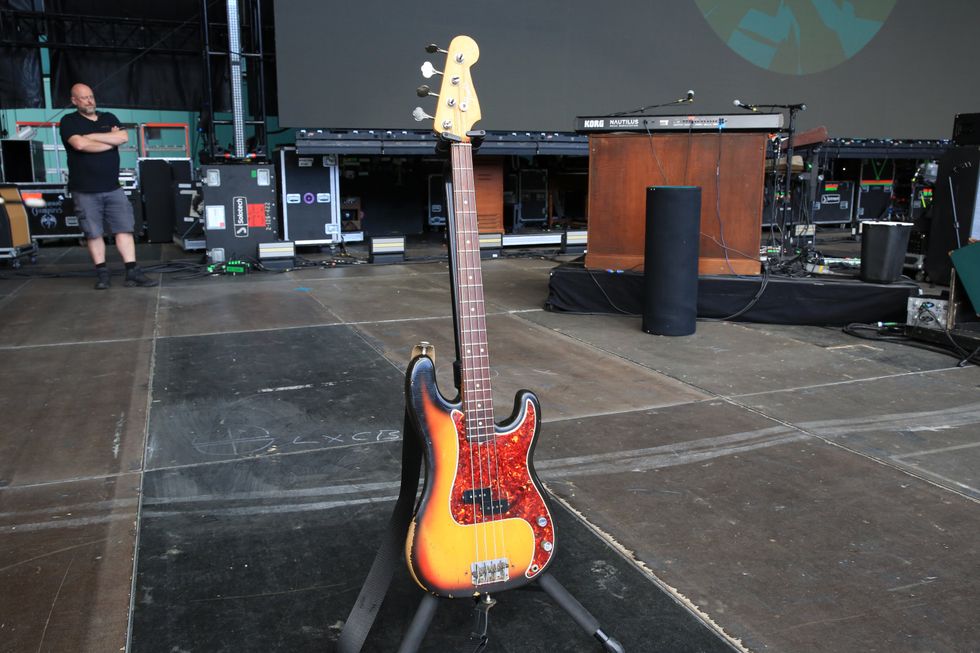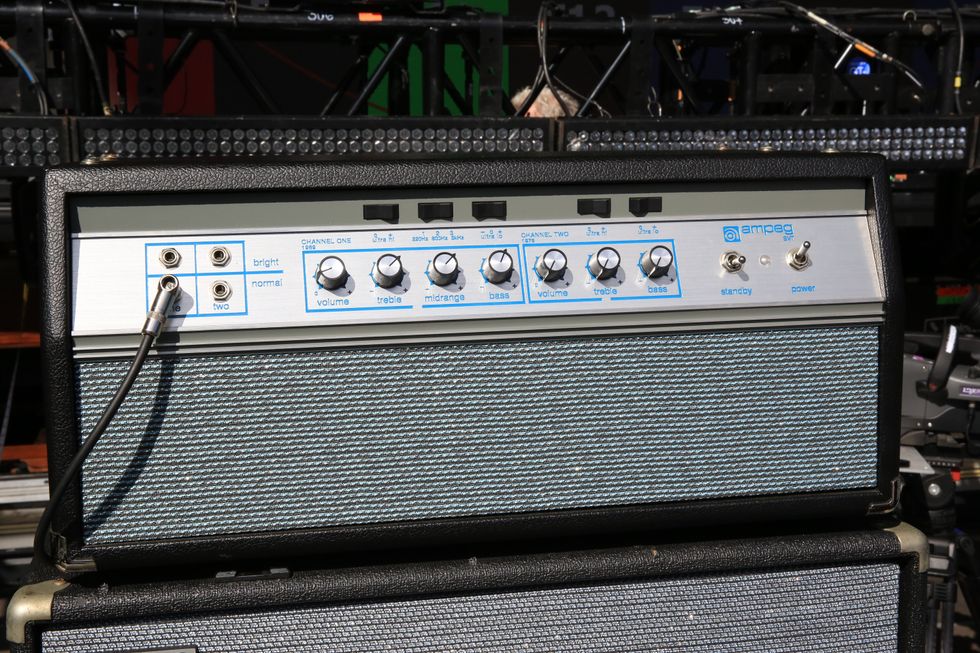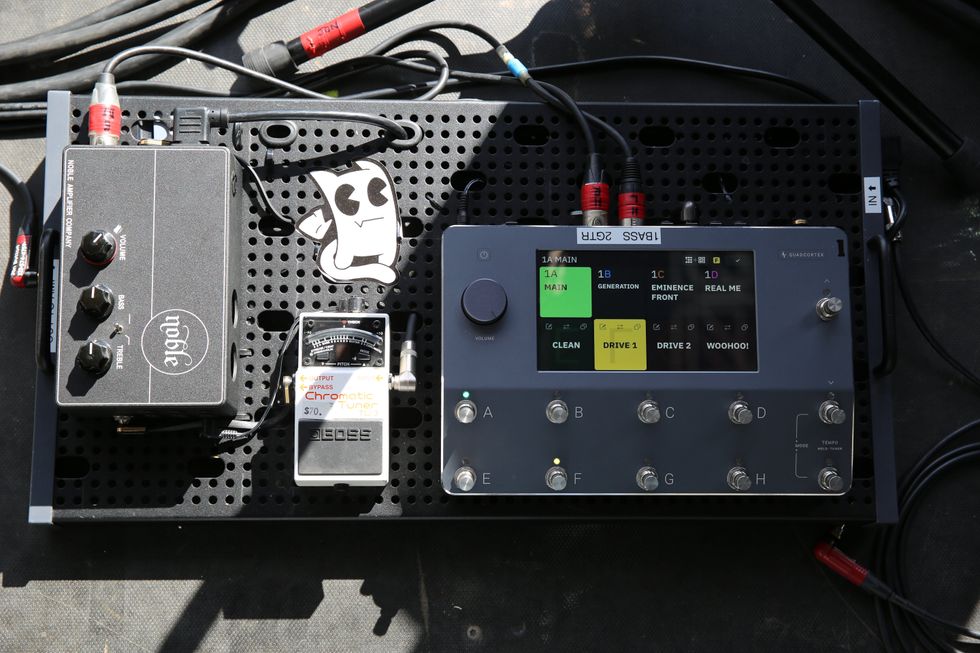Here he goes again on his own.
Adrian Vandenberg is a Dutch rock guitarist, best known for his tenure in Whitesnake during their successful late 1980s period, and also with the band Vandenberg, which he started in 1981. Vandenberg invited PG’s John Bohlinger to his soundcheck before his recent Nashville show to take us through his rig. Special thanks to guitar tech Willem van Roekel for giving us the extra details.
Hot-Rodded Heritage
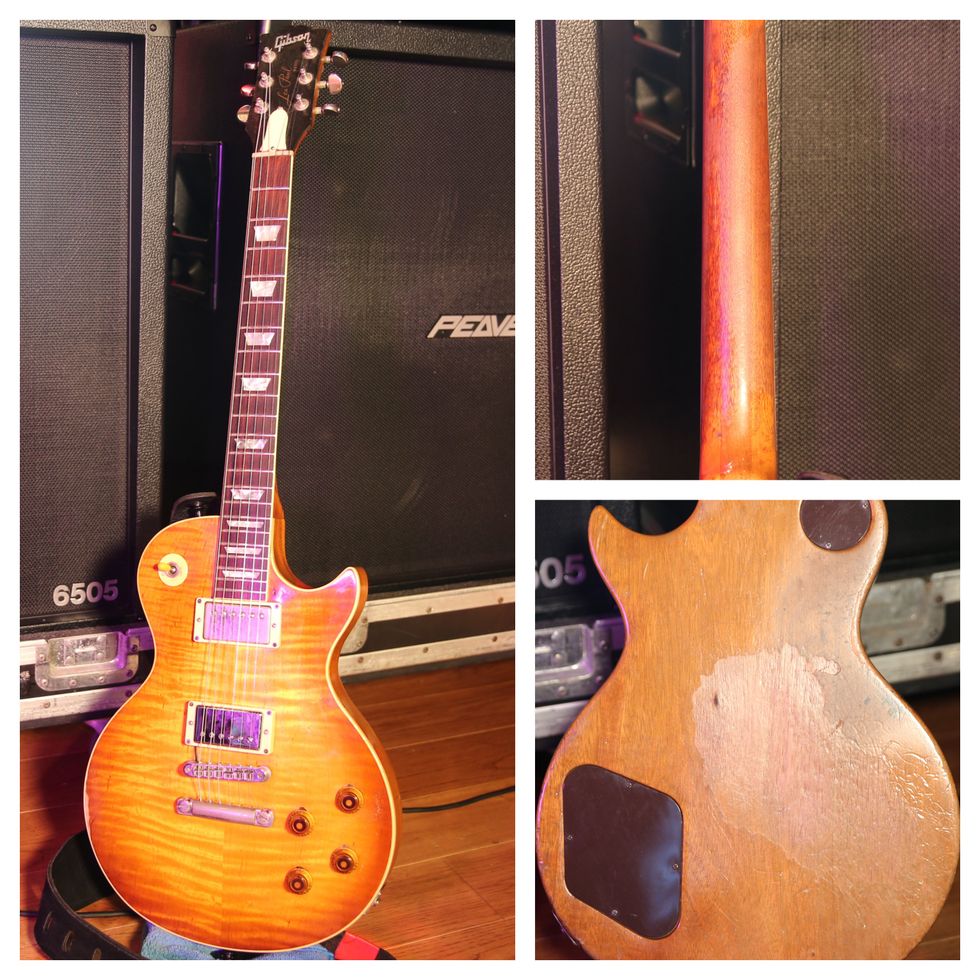
Vandenberg bought this 1980 Gibson Les Paul Heritage brand new. It’s been his number-one for 44 years. All original black plastics, like the truss rod cover, pickup rings, and more, were replaced by Adrian himself in the ’80’s to give it a unique look compared to other LPs. The day of this rundown, van Roekel replaced the original bridge pickup, which had grown microphonic over the years, with a new Burstbucker. Vandenberg’s strings are Ernie Ball Hybrid Slinky (.009-.046), and his picks are Herco Flex 75s.
Proto-Peavey
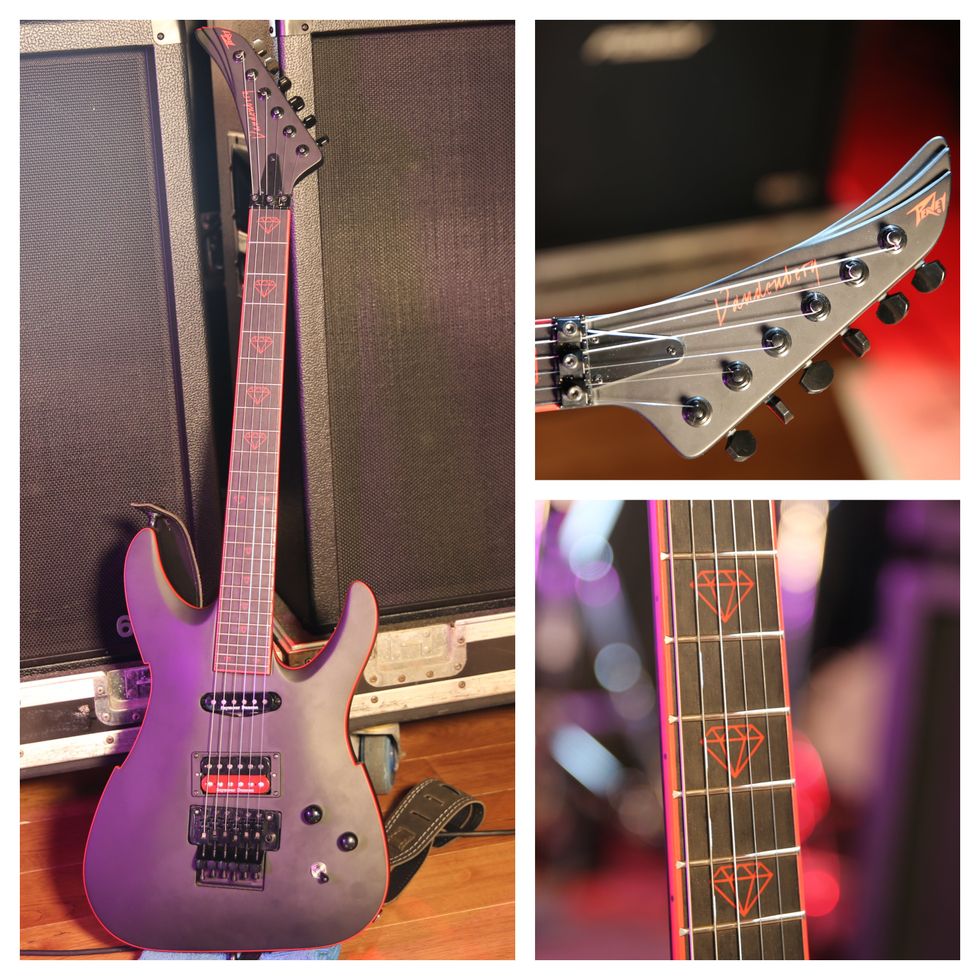
This Peavey Vandenberg is a prototype of his signature model. It is completely stock, loaded with Seymour Duncan JB Model pickups. The trem was not being used so van Roekel blocked it with a stack of quarters and dimes, which Vandenberg feels helps it get great sustain. The red diamond inlays are not really visible on a stage, so they will likely be changed.
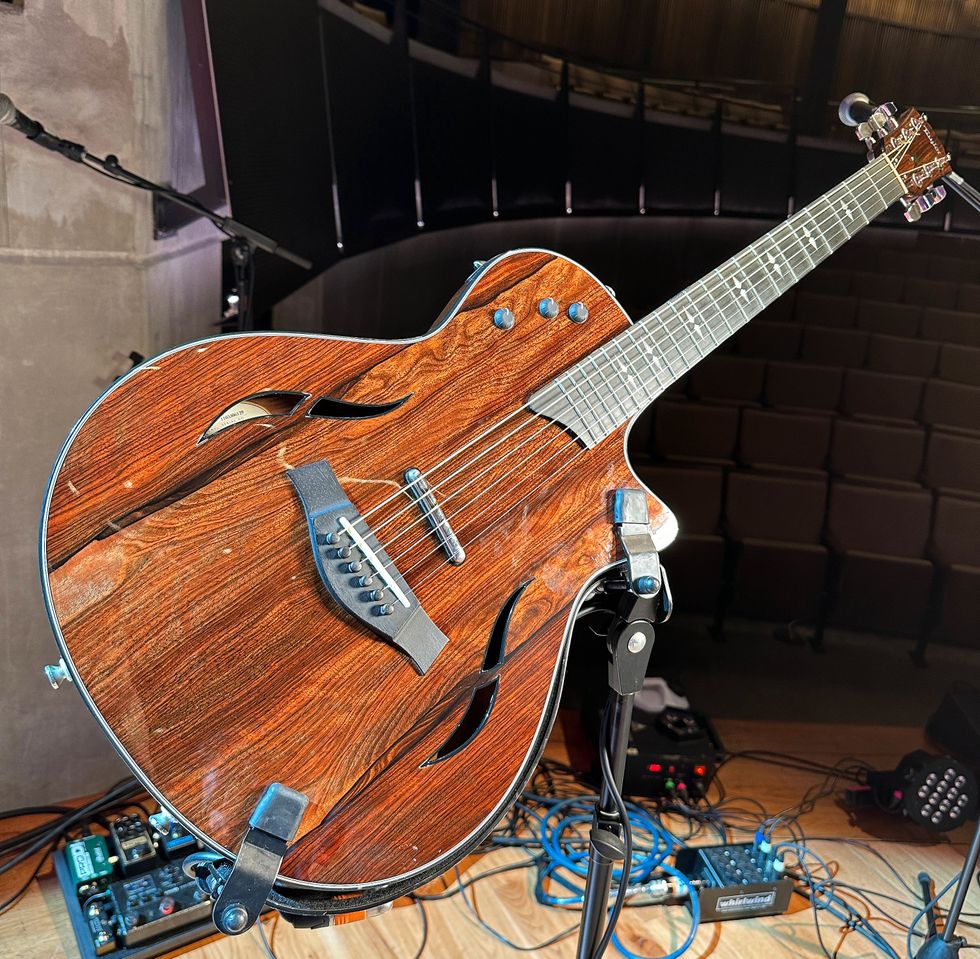
Vandenberg also plays a stock Taylor acoustic, which runs into Vandenberg’s Neural Quad Cortex using their J45 impulse response and some chorus and delay to make it sound like a proper guitar. The acoustic runs Ernie Ball Everlast Coated strings (.010-.050).
Cortex, Cabs, and Chorus
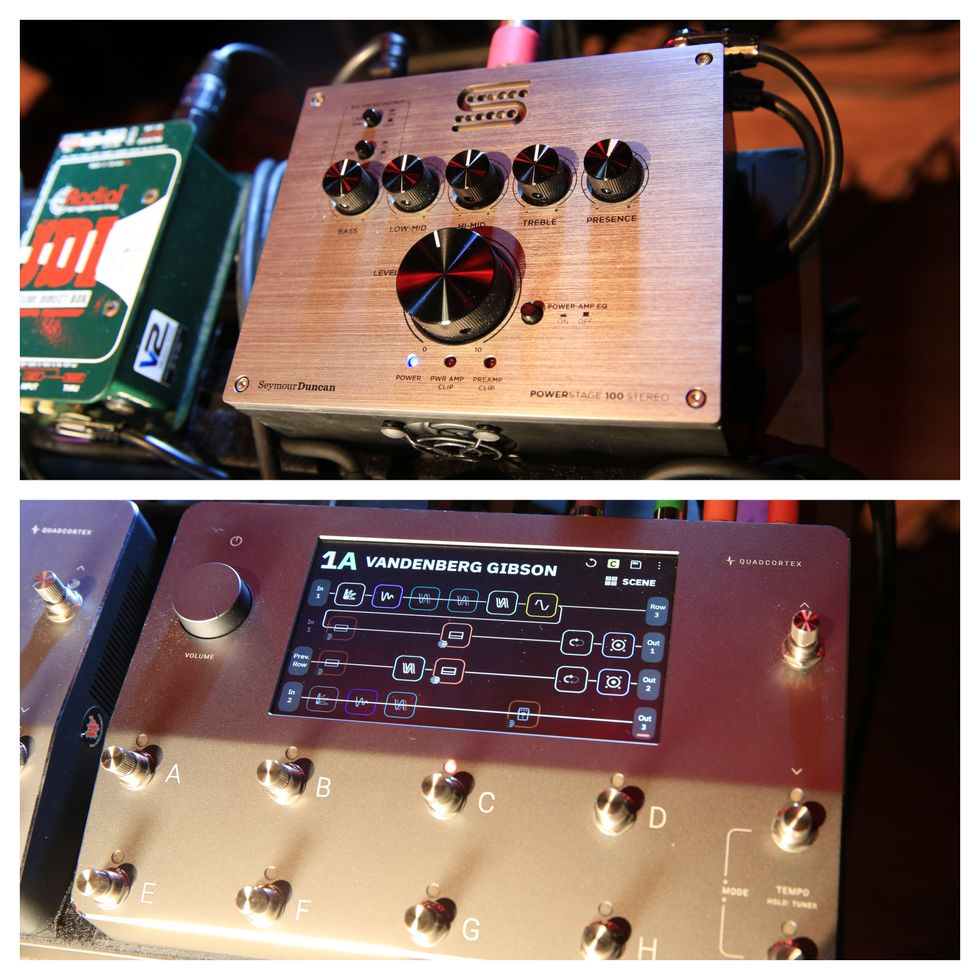
Vandenberg runs his Quad Cortex for all electrics and the acoustic, approaching it as you would a normal rig. The Cortex provides effects like chorus, delays, and a boost for leads. The amp section includes two primary profiles: “Signature Soldano” and “Modded Marshall.” All of the presets include a bit of chorus, and the “Modded Marshall” profile has a short delay on it at all times. His signal is then sent to a Seymour Duncan PowerStage 100 Stereo which feeds four 4x12 Peavey 6505 cabinets. The signals are split across Vandenberg’s cab stacks: The “Signature Soldano” goes to the first top and second bottom cabinets, and the “Modded Marshall” goes to the second top and first bottom cabinets.
Just in case something goes wrong, Vandenberg tours with a backup Quad Cortex and Seymour Duncan PowerStage that van Roekel can swap in a hurry if needed.
Shop Adrian Vandenberg's Rig

Gibson Les Paul Standard '60s Electric Guitar
Gibson Accessories '60s Burstbucker Humbucking Pickup
Peavey Vandenberg Signature Series Electric Guitar
Taylor T5z Custom Koa Hollowbody Electric Guitar
Seymour Duncan TB-6
Neural DSP Quad Cortex
Seymour Duncan PowerStage 100 Stereo
Peavey 6505 II 4 x 12-inch Slanted Cabinet
Ernie Ball Hybrid Slinky (.009-.046)
Ernie Ball Everlast Coated strings (.010-.050)
Herco HE211P Flex 75 1.01mm Silver Nylon Guitar Picks



![Rig Rundown: AFI [2025]](https://www.premierguitar.com/media-library/youtube.jpg?id=62064741&width=1245&height=700&quality=70&coordinates=0%2C0%2C0%2C0)


![Devon Eisenbarger [Katy Perry] Rig Rundown](https://www.premierguitar.com/media-library/youtube.jpg?id=61774583&width=1245&height=700&quality=70&coordinates=0%2C0%2C0%2C0)








